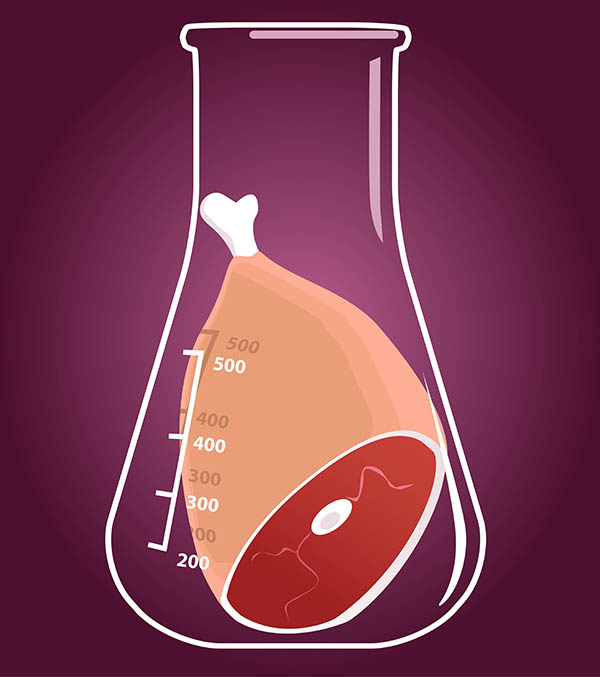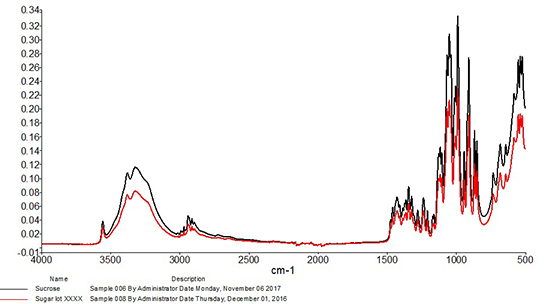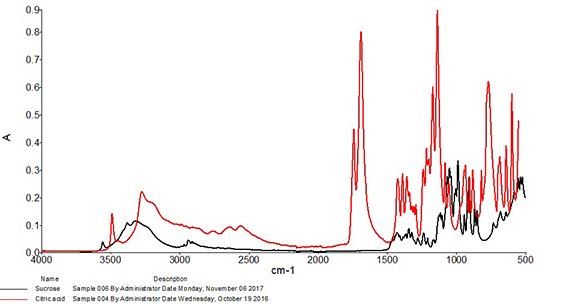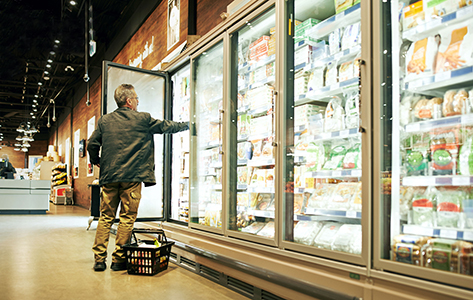The popularity of cannabis edibles and infused beverages as a socially accepted and convenient method of marijuana consumption has grown exponentially for consumers in states with a legalized market for both recreational and medicinal cannabis. The edibles industry’s success has been met with many challenges however, as the absence of federal regulation has provided little guidance regarding food safety practices. With consumers generally expecting these products to have the same safety expectations as they do with other food and beverages they consume, many manufacturers have elected to follow FSMA best practices to ensure cannabis edibles’ integrity in the marketplace. Proactive cannabis growers, processors and dispensaries are seeking out ERP software solutions in greater numbers to utilize the technological tools and vendor experience in the food and beverage market to establish greater accountability and plan for current and future compliance requirements.
Cannabis-derived edibles are food or beverage products that are made with cannabis or infused with cannabis extract—either consumed recreationally or to manage or alleviate health concerns. Cannabis extractions used in edibles include tetrahydrocannabinol (THC), which is psychoactive, and cannabidiol (CBD), which is not, as well as many derivatives when speaking of “whole plant” benefits. While there are a variety of edibles including gummies, candies, cookies, energy drinks, teas and chocolates, the defining characteristic of these products is that they are meant for human consumption. Public perception is that these products are held to the same safety and quality considerations as mainstream food and beverage products available in the market. With these expectations and lack of oversight, the responsibility falls on the manufacturer to meet those expectations and ensure a safe, consistent, quality edible product.
Safety and Quality Concerns
An unregulated industry at the federal level has resulted in a lack of consistency, predictability and safety in the edibles market. Frequently, it has been found that edibles don’t always produce the same experience from one consumption to the next, resulting from inconsistent appearance, taste, texture and potency. These variances pose a problem from a marketing perspective, as it impacts brand recognition, loyalty and returning customers. Similar to the food and beverage industry, foodborne illnesses, outbreaks, undeclared ingredients and inaccurate labeling provide further concern in an unregulated manufacturing environment. Specific safety issues of the cannabis industry include extraction processes, mold and bacteria growth, chemical exposure, pest and pesticide contamination, employee handling of products and the unintentional ingestion of cannabis edibles. With the high risks associated with this market, it is necessary for proactive growers, processors and dispensaries to adequately address quality and safety concerns that mitigate risk until the eventuality of regulatory oversight.
How ERP Can Help
Implementing an industry-specific ERP software solution that provides security and standardizes and automates business functions helps support cannabis manufacturers by providing the proper tools to track operations from seed-to-sale. With support for best practices and streamlined and documented processes, companies can incorporate safety and quality initiatives from cultivation to the sale of edible products and beyond. Utilizing the expertise of ERP vendors in the area of food safety management, edible manufacturers are provided with the same benefits that food and beverage companies have experienced for decades with ERP solutions. Cannabis ERP software allows your company to track all aspects of growing, manufacturing, packaging, distribution and sales—providing functionality that manages inventory, traceability, recipes and labeling to support quality initiatives.
The following areas supported by ERP can lead cannabis edible manufacturers to succeed in the realm of food safety:
Inventory Control. ERP’s automatic recording and tracking of inventory attributes, including balances, expiration dates, plant tag ID’s, serial and lot numbers and end-to-end traceability, allows cannabis edible manufacturers to maintain appropriate raw material and product levels, reduce waste, evaluate inventory flow, facilitate rotation methods and avoid overproduction. It provides accurate ingredient and cost tracking throughout the greenhouse operations and supply chain by use of barcode scanning that links product information to batch tickets, shipping documents and labels. Maintaining real-time and integrated information facilitates the ability to locate items in the event of contamination or recall. This detailed level of continuous monitoring mitigates the risk of unsafe consumables entering the market.
Labeling. Accurate product labeling is essential for food safety in the cannabis edibles industry, and its importance cannot be understated. Proper labeling and transparency ensure that consumers are provided a consistent experience and also help to mitigate unintentional consumption of cannabis-infused products. Certain states have enacted labeling requirements to increase accountability and mitigate the misrepresentation of cannabis edibles on the label with unverified, misleading or inaccurate information. Employing an automated ERP system assists with label creation that includes nutrient analysis, ingredient and allergen statements, testing notification for bio-contaminants and pathogens and expiration dates to ensure quality—providing a faster and more efficient method for labeling. Accurate labeling is also an imperative component of product recall planning, as traceability and labeling history documented in ERP software helps to identify and locate items quickly in the event of a recall.
Recipe and Formulation Management. To achieve consistency of products in taste, texture, appearance, potency and intended results, complex recipe and formula management are maintained with a real-time ERP solution that delivers tightly managed control. Raw material data, version and revision information and production notes are documented for each batch. The monitoring of key quality specifications such as THC and CBD percentage, containment and impurities testing, etc. are readily handled within the system and allows for the scalability of recipes as needed. Direct access to the calculation of specific nutritional values, which includes ingredient and allergen information, provides accurate labeling and consumer information for product packaging—a valuable asset in the cannabis edibles market. R&D functionality supports the creation of new and innovative edibles and marijuana-infused beverages in a sandbox environment to meet the demands of this consumer-driven market.
Approved Supplier Relationships. Assurance of cannabis edible safety is enhanced through the acquisition of quality raw materials from trusted vendors. An ERP solution plays an essential role in the process as it maintains a supplier list by documenting detailed supplier information and test results to assure in-house qualifications and potency standards are met. A fully-integrated ERP system regulates quality control testing to ensure consistent and approved materials are being used and undeclared substances, harmful chemicals and impure ingredients are unable to infiltrate the supply chain. Failure to meet quality control standards results in ingredients being quarantined, removed from production and disposed of safely, and indicates that a search for alternate vendors is needed. This detailed level of documentation is a best practice for maintaining current and accurate supplier information in the event of a product recall.
Current Good Manufacturing Practices (cGMPs). As the bedrock for the food and beverage industries, following cGMPs establishes an important foundation for the edibles market. An ERP efficiently documents processes to ensure safe and sanitary manufacturing, storage and packaging of food for human consumption. This includes monitoring equipment status, establishing cleaning and hygienic procedures, training employees, reporting illnesses, maintaining food and cannabis handling certifications and eliminating allergen cross-contact risks. Validating procedures within an ERP solution automates documentation of an audit trail and addresses food safety concerns more efficiently than manual methods.
Hazard Analysis Critical Control Points (HACCP) Requirements. Establishing a food safety team that develops a HACCP plan to enact procedures that protect consumers from the biological, chemical and physical dangers of edibles is a recommended best practice for quality assurance, despite the current lack of federal regulations. Critical control points recorded within an ERP solution prevent and control hazards before food safety is compromised. Parameters within the ERP system can be utilized to identify potential hazards before further contamination can occur. Applying these best practices historically used by food and beverage manufacturers can provide an enhanced level of food safety protocols to ensure quality, consistent and safe consumables.
Food Safety Plan. As a requirement of FSMA, a food safety plan provides a systematic approach of identifying and addressing food safety hazards by implementing preventative food safety procedures throughout the manufacturing, processing, packing and storage of products. With a trained Preventative Control Qualified Individual (PCQI) at the helm to coordinate the company-specific plan, an ERP solution automates and records preventative controls, full forward and backward lot traceability, recall plans and employee training records within an integrated system to ensure that food safety policies and procedures are being followed.
With the growth of the edibles and infused beverage market expected to skyrocket over the next four years, the success of growers, processors and manufacturers will continue to thrive off of technological tools and established best practices. Employing the industry experience of ERP software providers that have implemented food safety and quality control procedures will follow suit of the market and be a sought-after resource when federal regulations are imposed. Proactive cannabis businesses are already experiencing a return on investment in their ability to provide quality, consistent products that meet cannabis enthusiasts’ high expectations and keep them ahead of this trending market.


























